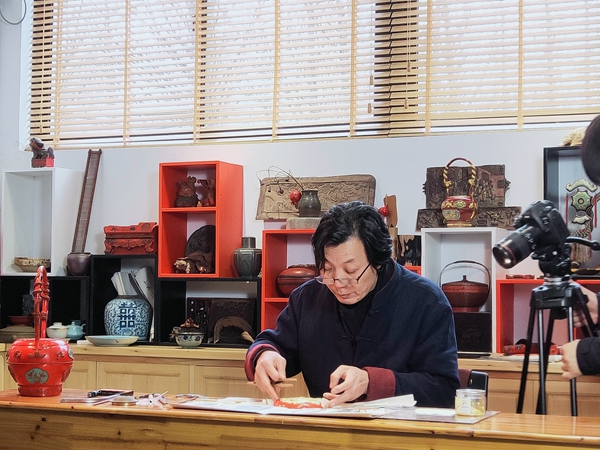Giving lacquerware a new shine

Huang Cailiang, an officially recognized inheritor of making gold-painted lacquerware, has practiced the craft for more than four decades. He now spends more time on training students to cultivate young inheritors. [Photo provided to China Daily]
The traditional craft is regaining popularity, especially as wedding gifts, thanks largely to the work of a small group of inheritors, Ma Zhenhuan reports in Hangzhou.
In ancient China, and especially in Jiangnan-the region south of the Yangtze River-a woman's dowry, including wooden furniture, jewelry and ornaments, were often considered a reflection of her parents' love.
Parents prepared the most exquisite and precious objects for their betrothed daughters to show their love and to support them in husbands' families. A woman's dowry, which typically featured gold and red color schemes, usually required skilled and arduous work.
In the past, rich families in Ninghai, a coastal county in East China's Zhejiang province's Ningbo, would prepare a large number of red dowries for their daughters.
There's an old saying-using exaggeration for the purpose of illustration-that the team carrying these and accompanying the bride on her way to the groom's family would stretch for about 5 kilometers.





 play
play